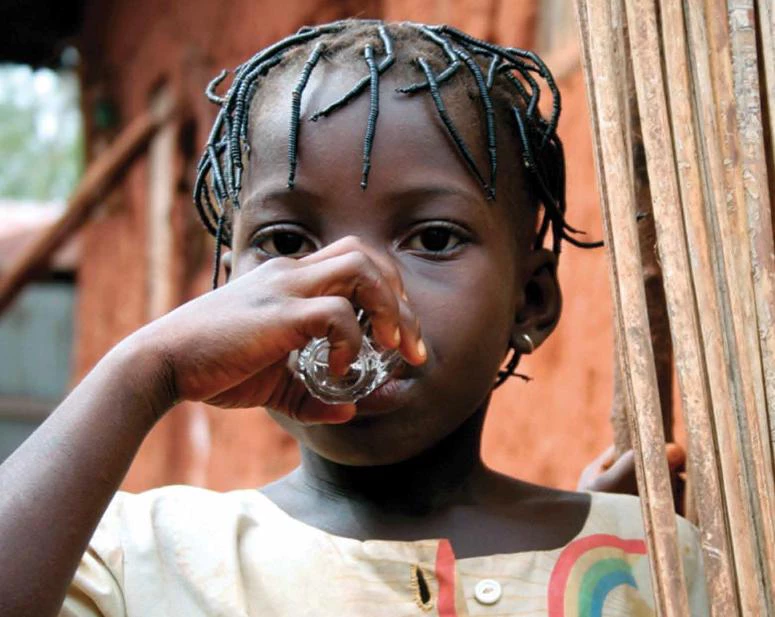Not long ago, I carried a 20-liter bottle of water three blocks to my apartment (there is an artesian well in a nearby park). At first it was easy. I lifted it up onto my shoulders and walked boldly along the street, drawing admiring looks from everyone I passed.
But it didn’t take long for my muscles to feel the burn. Then my back started to ache. By the time I got home, I was wiped out. Never again, I thought.

The problem isn’t just carrying water. In rural Uganda, where 90 percent of the county’s people live, more than half the population does not have access to safe water or adequate sanitation. The resulting water-borne diseases have a big economic cost: people have to spend scarce income on doctors and medicine and are less able to work. Child mortality is high, and tending to sick children further reduces economic opportunities.
Bringing safe water and sanitation to rural areas could do a lot to tackle the problem. But how can cash-strapped governments afford this? One solution is by tapping into the private sector, which is the approach the Ugandan government is working on through the Small-Scale Water Infrastructure Program (SSIP). The program was based on recommendations by the World Bank’s Public-Private Infrastructure Advisory Facility (PPIAF) and implemented with help from the International Finance Corporation (IFC).
The idea was to tap into the private sector to increase affordable access to water in rural areas through public-private partnerships (PPPs). The program started with a tender for a five-year management contract to manage and expand the water system in a small town, Busembatia. IFC trained banks in financing private water operators, provided transaction advice to government on managing the tender, and trained officials in contract administration.
So far, it’s off to a good start. Trandint Limited, a local firm, won the tender and secured financing from a Ugandan commercial bank to install 400 new water connections. This will bring safe water to 13,000 additional people without raising tariffs.
Not a bad outcome, but big questions remain. Will the program work? If so, can it be replicated to other rural regions of Uganda? And will the Government be able to tap into the private sector without World Bank Group assistance?
In five years we’ll know the answer. In the meantime, I’ll think about Uganda every time I carry gigantic water bottles.
Read more about the project in Handshake, IFC’s quarterly journal on Public-Private Partnerships.


Join the Conversation